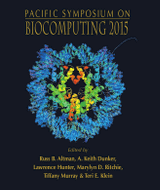
Benjamin S. Glicksberg1,2, Li Li1, Wei-Yi Cheng1, Khader Shameer1, Jörg Hakenberg1, Rafael Castellanos1, Meng Ma1, Lisong Shi1, Hardik Shah1, Joel T. Dudley1,2, Rong Chen1
1Department of Genetics and Genomic Sciences, Icahn School of Medicine at Mount Sinai
2Department of Neuroscience, Icahn School of Medicine at Mount Sinai
Email: Rong.Chen@mssm.edu
Pacific Symposium on Biocomputing 20:407-418(2015)
In the past decade there has been an explosion in genetic research that has resulted in the generation of enormous quantities of disease-related data. In the current study, we have compiled disease risk gene variant information and Electronic Medical Record (EMR) classification codes from various repositories for 305 diseases. Using such data, we developed a pipeline to test for clinical prevalence, gene-variant overlap, and literature presence for all 46,360 unique diseases pairs. To determine whether disease pairs were enriched we systematically employed both Fishers’ Exact (medical and literature) and Term Frequency-Inverse Document Frequency (genetics) methodologies to test for enrichment, defining statistical significance at a Bonferonni adjusted threshold of (p < 1x10-6) and weighted q<0.05 accordingly. We hypothesize that disease pairs that are statistically enriched in medical and genetic spheres, but not so in the literature have the potential to reveal non-obvious connections between clinically disparate phenotypes. Using this pipeline, we identified 2,316 disease pairs that were significantly enriched within an EMR and 213 enriched genetically. Of these, 65 disease pairs were statistically enriched in both, 19 of which are believed to be novel. These identified non-obvious relationships between disease pairs are suggestive of a shared underlying etiology with clinical presentation. Further investigation of uncovered disease-pair relationships has the potential to provide insights into the architecture of complex diseases, and update existing knowledge of risk factors.